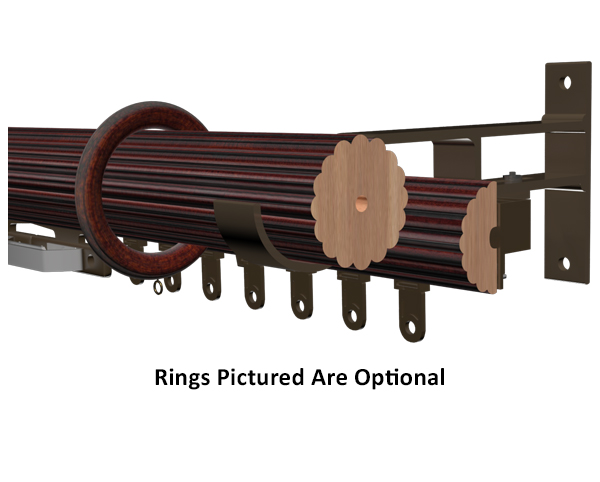Heavy-Duty Ripplefold Curtain Rods For A Sleek And Elegant Look
It's important to understand at a Ripplefold curtain rod can only be used with a Ripplefold drapery. This style of drapery is manufactured using a flat panel and Ripplefold snap tape. The carriers are connected to one another along the span of your rod and their spacing causes the flat curtain panel to fold evenly creating the ripple look. Sometimes, shoppers mistake a pinch-pleat drapery for a Ripplefold drapery. If your curtain doesn't have snap tape at the top or requires pins to attach it to a curtain rod, then you don't have a Ripplefold curtain and you must consider a different rod. If you're not certain which style drapery you have, ask your drapery maker or call us for help before purchasing a Ripplefold rod.
The amount of space between each carrier determines the fullness of your drapery. The most common fullness use is one hundred percent. But, you can make your curtain appear thicker or less full by adjusting your fullness percentage. Fuller drapes require more fabric, so make sure you know the exact fullness you need before selecting your curtain rod.
The type of master carrier you select will determine how your drapery appears when closed. If you want your curtain to appear to be one continuous piece when closed, use butting masters. Or, if you want one panel to extend slightly past the other to block out the maximum amount of light, use overlapping masters.













































































